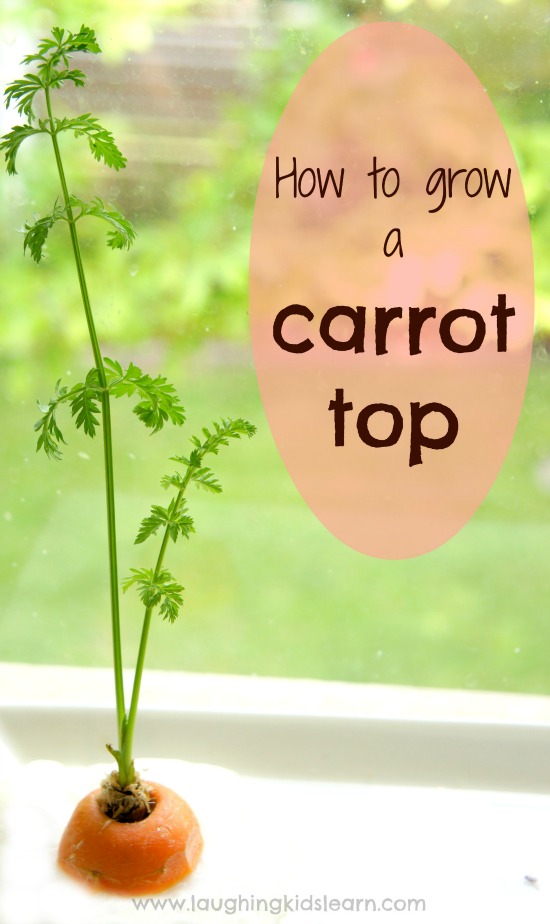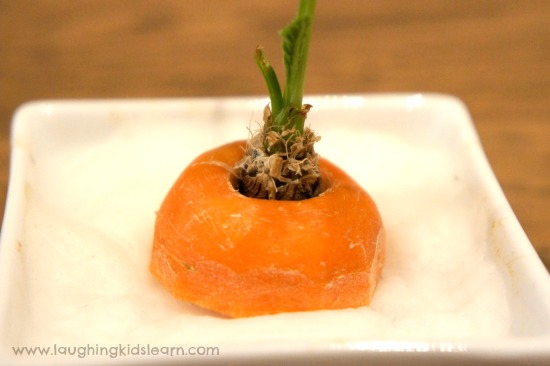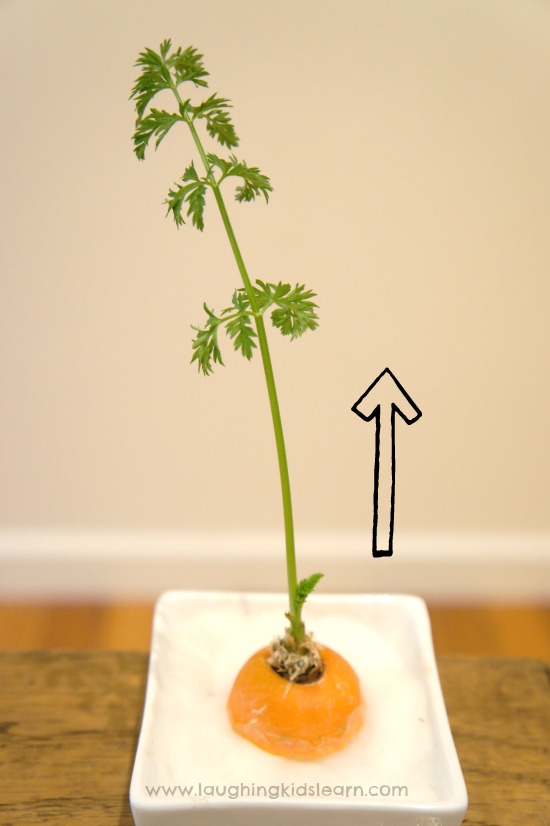20 Feb Kitchen Scrap Gardening
It’s mid-winter and the kids are clamoring for things to do. Outdoor play is great, but here’s a fun indoor planting activity to offer when the weather is lousy. With little effort and a pinch of creativity you can devise some very imaginative indoor gardens from your kitchen leftovers!
Kitchen scrap gardening is when you grow plants from items you’d normally throw in your compost bucket. Kids love this idea, and it’s a great way to reinforce the sustainable living concepts of recycling and reusing. Plus, it’s a kick to grow new plants from old plant parts.
Here are the instructions on how to grow a carrot top at home. This is a fabulous introduction to growing for children as it provides them with a basic form of responsibility to look after and help it grow. So much can be observed over the days it sprouts and grows up tall. Changes can also be recorded on paper.
- Carrot top (2-3 cm from stem with some root growth remaining on top)
- Shallow dish
- 10 Cotton wool
- Water
- Sunny and protected spot
Simply add a layer of cotton balls to your small dish. Add a light dribble of water over the
cotton balls so they are wet but not completely flooded with water. Press your carrot top into the wet cotton balls and place the dish in a sunny location. Be sure to check that the cotton balls remain wet throughout the growing period. You do not want to dry them out.
It will take a few days for children to see the carrot top begin to grow, however, once it starts it will grow quite quickly when in the right conditions.
root vegetables so why not give your child a chance to experiment a few different types and record their findings. Have them test to see if there is a difference between growth rate whenThis activity that is so simple to set up teaches children –
- How a root vegetable grows (science)
- Developing a sense of responsibility in looking after it
- Observational skills
- Plant care
Of course it is possible to grow other root vegetables so why not give your child a chance to experiment a few different types and record their findings. Have them test to see if there is a difference between growth rate.
Source: Laughing Kids Learn







